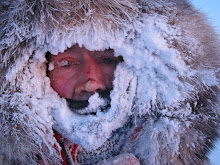I'm basically down to final equipment sourcing. I thought it some of you maybe interested in the electronic / communications side: Here is all the electronic equipment I am taking with me:

Starting at the top left, is the Iridium 9505A satellite phone, and then continuing clockwise, first is the Canon S90 Digital camera, then the 'sat phone' charger, followed by the IPAQ PDA charger, then the Main Power Supply / Charger for all the chargers, then the IPAQ PDA (basically just a very small PC), connected to the IPAQ is a modem serial input / output card to enable data transfer via the phone, and then lastly right in the centre is the Canon camera battery charger.
Lots of chargers I hear you say...??? Yeah, power is a scarce resource, and as we all know, these electronic devices all need power to function. All the power will come from the 100 AA Lithium batteries shown below:

The item I called the Main Power Supply / Charger in the photo above basically holds 8 x AA Lithium batteries connected in series, connected via a cable to a female automobile, 'cigarette lighter', socket. All the other chargers then have male connectors and one by one, as required they will be connected to the Main Power Supply / Charger and their respective, electronic devices, to have their rechargeable batteries charged by the AA's. I also am taking along, 10 spare and fully recharged camera batteries, just as a 2nd backup.
The other big issue with power, is the fact that at temperatures below about -15 degrees C, the standard electronic device batteries cease to provide power, even if they are 100% charged. This means that most of the devices will only be used inside the tent at night when conditions are significantly warmer while those 'wonderful' stoves are burning. The camera is an obvious exception, as I am sure blog viewers would get tired of only, 'inside tent' pictures, albeit that they may provide the most amusement! So, how do I get photo's on the run, when the temperature is -50 degrees C? Well, its a process that requires patience, and not designed for that surprise shot of the Polar bear we suddenly bump into! Basically the camera is carried without battery, with the battery being stored somewhere deep in my underwear, where it can remain close to my body temperature. I have this fancy store and recovery mechanism that allows me to quickly retrieve the battery when needed. I then pop the batter into the freezing cold camera, and quickly snap my shots before the warm battery succumbs to the cold camera body, and eventually dies! This has to all be done with huge three layer gloves / mitts, that make one feel as if there are no hands at the ends of your arms! I have had to modify the camera to enable me to easily operate the on/off and shutter buttons with mitts. Also, one of the reasons I have chosen this Canon model, is that it has large lens ring, that is easily operated with mitts, and can be used to adjust virtually all the key photo shoot variables. It's also a 'semi profession', meaning that it is virtually a DSLR, only not having the 'through the lens' optics.
The IPAQ PDA will be used to put together content for emails, manage the photo's from the camera. Then using a normal Windows Mobile messaging system and linkage to the satellite phone, using the PDA modem, shown above, enable the blog reader to get follow the expedition in 'virtual realtime'.
I am told that with each year of global warming / climate change, conditions in the arctic are deteriorating, with more storms, less sun, albeit warmer conditions. (We are not expecting to see the sun for up to two weeks at a time. This all means that using the sun for power generation, and / or navigation is not possible / viable.
You may ask where the navigation equipment is? Well that will be largely by GPS, and Richard, the expedition leader looks after those. Yes, I have my own hand held compass, and my watch compass which will no doubt be used along the way. (There will be a future post on Navigation, as there are some unusual quirks in navigating one's way to the North Pole!
Now for the story behind the South African flag in the photo, on top of which all the equipment sits: It's actually a bandanna, sent to me here in London, by Martin Evans, a good friend of mine in Johannesburg. It came with a a special message, that included a request that I send him a photo back from the North Pole, ie 90 00.00 degrees North, showing me wearing the bandanna. Martin, provided I get there, it will be a pleasure, and a moment for South Africa.
That's the end of this technical Post.....


No comments:
Post a Comment
Note: Only a member of this blog may post a comment.